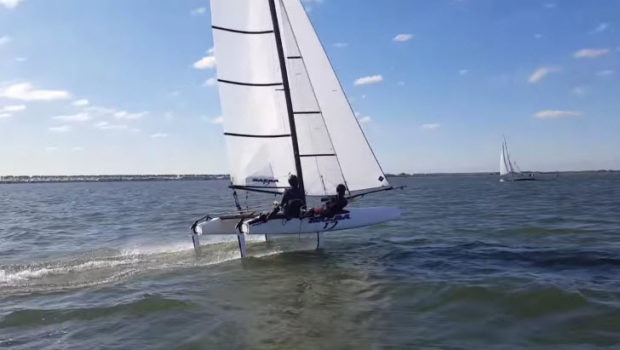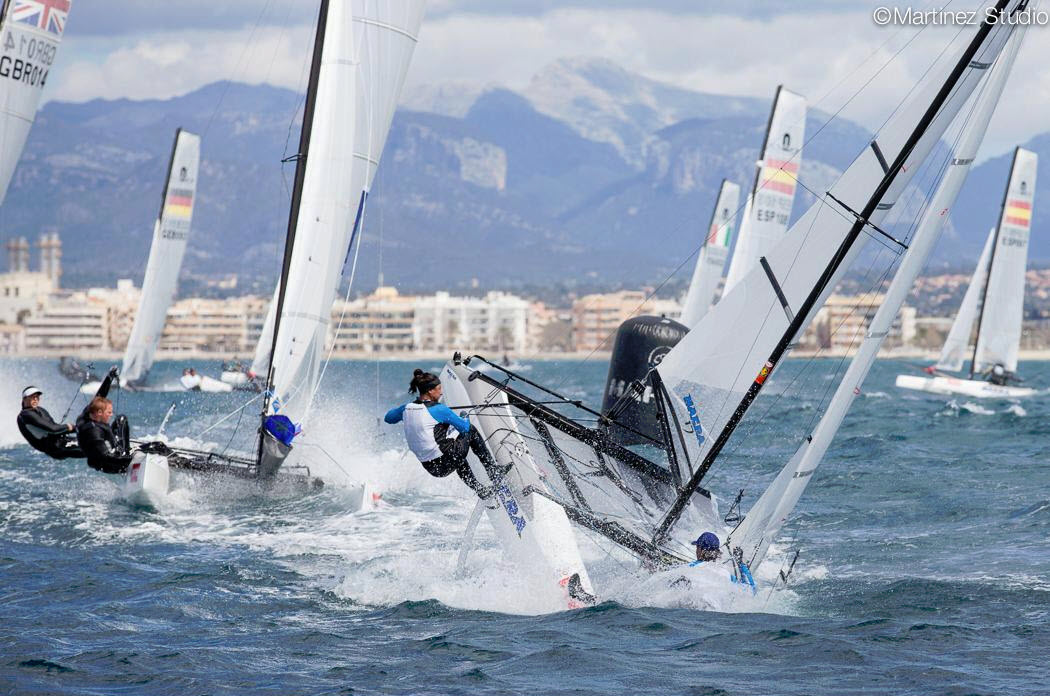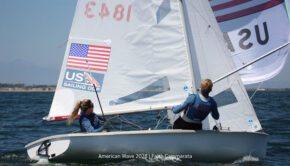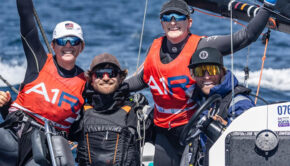Nacra 17: To Foil or Not to Foil
Published on October 12th, 2016
by Craig Leweck, Scuttlebutt
It has been a difficult Olympic quad for the Nacra 17, the boat designed specifically to be used for the new Mixed Multihull event at the Rio Olympics. As teams familiarized themselves with the new boat, two aspects became apparent: the boats were hard to control and the boats were poorly built.
The control issue had to do with the lack of foil development. Unluckily, the Nacra 17 was splashed 6 to 9 months before cats in the America’s Cup showed it possible to fully foil. The current edition of the boat has lifting C foils that teams can occasionally make balance to give it full lifting from the water, but in an unstable manner. Photographers camped out at weather marks to capture the carnage during the bear away were often rewarded.
Looking forward toward Tokyo 2020, the World Sailing Equipment Committee requested the Nacra 17 class investigate an evolution to full foiling. While there has been interest among sailors for this step, the concern has been whether the notoriously fragile boats could endure the higher loads that foiling blades would inflict on the hulls which already have an extremely short competitive life.
Morelli and Melvin, designers of the boat, were assigned to find the solutions with lead builder Peter Vink. Along with a change to the rudder and daggerboard has come a host of structural upgrades which include moving the daggerboard case forward about 4 inches, and a shorter spin pole and gennaker anticipating much higher downwind speeds.
Two modified boats are now being tested in the Netherlands (see videos below), with class members to vote October 17 on the future. Sailors will get a chance to recommend to World Sailing and Nacra copyright holders if they wish to adopt the fully foiling set-up or remain with the C foils that were used in Rio 2016.
It is hard to see a way forward without casualties. A change to a fully foiling set-up modernizes the boat but not without financial expense to current boat owners. To remain with the current foils still requires improved construction, which also impacts stake holders with poorly built boats.
Whatever the outcome, World Sailing must dictate all Olympic equipment be reasonably durable. An Olympic campaign is expensive enough without throw-away boats. When World Sailing selects the equipment for the Olympic Games, they take on a responsibility that the boats will endure the use by their constituents. Hopefully this next quad will be better.
Note: The Nacra 17 class contributed to this report.










 We’ll keep your information safe.
We’ll keep your information safe.